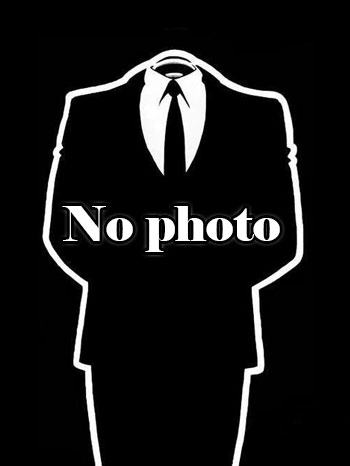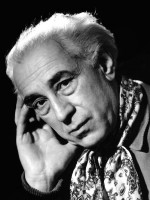Segundo de Chomón is a Actor, Director, Scriptwriter, Director of Photography, Visual Effects and Cinematography Espagnol born on 16 october 1871 at Teruel (Espagne)

Segundo Víctor Aurelio Chomón y Ruiz (17 October 1871 – 2 May 1929) was a pioneering Spanish film director. He produced many short films in France while working for Pathé Frères and has been compared to Georges Méliès, due to his frequent camera tricks and optical illusions. He is regarded as the most significant Spanish silent film director in an international context.
In 1912, De Chómon accepted an invitation to make films in Italy. In addition to his own films, he worked on special effects on the films of others, notably Giovanni Pastrone's epic Cabiria (1914). Pastrone returned the favor in 1917 through collaborating on de Chomón's last directorial effort, La guerra e il sogno di Momi; de Chomón's own films had become less frequent after his move to Italy, and he had primarily worked in visual effects and cinematography in these years. After 1917, De Chomón principally worked on creating visual effects for the films of others, including Guido Brignone's Maciste in Hell (1925) and Abel Gance's Napoléon (1927). Towards the end of his life, de Chomón collaborated with Swiss inventor Ernest Zollinger to develop a photographic, two-color color film process. De Chomón was planning to get back into full-time film production on his own when he died, suddenly, of a heart attack at age 57.
Source : Wikidata
Segundo de Chomón

Birth name Segundo Víctor Aurelio Chomón y Ruiz
Nationality Espagne
Birth 16 october 1871 at Teruel (Espagne)
Death 2 may 1929 (at 57 years) at Paris (France)
Nationality Espagne
Birth 16 october 1871 at Teruel (Espagne)
Death 2 may 1929 (at 57 years) at Paris (France)
Biography
Born in Aragon (Spain), Segundo de Chomón reportedly got into film through the efforts of his actress wife, Julienne Mathieu, who appeared in early Pathé Frères productions. Around 1900 he became an agent for Pathé Frères in Spain, publicizing and distributing their films out of Barcelona. In 1901, De Chomón began producing actuality films in Spain on an independent basis and distributing them through Pathé; his first trick film was Gulliver en el país de los gigantes (1903). De Chomón also specialized in producing stencil colored film prints and was one of the developers of the Pathéchrome process, patented by Pathé in 1905. Charles Pathé also noted the quality of De Chomón's trick films and, from 1903, began to support these efforts with the desire of competing with Georges Méliès. De Chomón was expert enough at making trick films and had proven himself so valuable to Pathé that in 1905 he and Mathieu moved from Barcelona to Paris, and De Chomón was placed in charge of a color stencilling shop in addition to his periodic duties as a director. Through 1907, De Chomón worked in close collaboration with Pathé's top director, Ferdinand Zecca; the partnership worked so well that in 1907 Zecca selected De Chomón to co-direct a major project, the remake of Zecca's own 1903 Vie et Passion de Notre Seigneur Jésus Christ. Shortly afterward, Zecca moved into an executive position at Pathé and did little direction from that time; De Chomón's most productive years as a filmmaker lasted from 1907 to 1912, a period during which Méliès' production went into a steep decline. De Chomón often worked with other directors; in addition to Zecca he collaborated with Gaston Velle, Juan Fuster, Alberto Capellani and Émile Cohl. Although he remained with Pathé, in 1910 De Chomón returned to Barcelona and started an independent production company, Iberico Films, which proved short-lived.In 1912, De Chómon accepted an invitation to make films in Italy. In addition to his own films, he worked on special effects on the films of others, notably Giovanni Pastrone's epic Cabiria (1914). Pastrone returned the favor in 1917 through collaborating on de Chomón's last directorial effort, La guerra e il sogno di Momi; de Chomón's own films had become less frequent after his move to Italy, and he had primarily worked in visual effects and cinematography in these years. After 1917, De Chomón principally worked on creating visual effects for the films of others, including Guido Brignone's Maciste in Hell (1925) and Abel Gance's Napoléon (1927). Towards the end of his life, de Chomón collaborated with Swiss inventor Ernest Zollinger to develop a photographic, two-color color film process. De Chomón was planning to get back into full-time film production on his own when he died, suddenly, of a heart attack at age 57.
Usually with
Filmography of Segundo de Chomón (52 films)
Actor
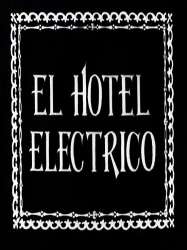
The Electric Hotel (1908)
, 8minutesDirected by Segundo de Chomón
Origin France
Genres Science fiction, Comedy, Fantasy, Animation
Actors Segundo de Chomón, Julienne Mathieu
Roles Bertrand
Rating65%





As baggage is checked in, that baggage moves by itself to a room where it opens itself, revealing lots of brushes that now move out. A man and a woman sit down. Then the man's boot unbuckles by itself. With the boot off, a brush moves itself up and down on the front end. The woman's coat comes off by itself, followed by the woman's hair receiving a thorough brushing - also by itself - and subsequently her hair ties itself into a bun. Following those actions is a scene of a man in front of a wall full of electrical switches. As he pulls one large switch down, the scene cuts to various chairs and other furniture moving in chaotic ways as the short ends.
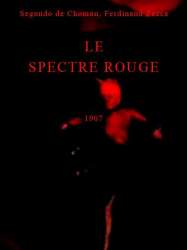
The Red Spectre (1907)
Directed by Segundo de Chomón, Ferdinand Zecca
Genres Fantasy
Actors Segundo de Chomón, Julienne Mathieu
Rating64%





Director
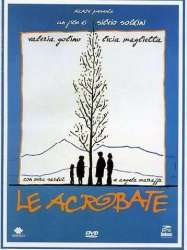
Le acrobate (1997)
, 2h3Directed by Segundo de Chomón, Silvio Soldini
Genres Comedy
Actors Licia Maglietta, Valeria Golino, Manrico Gammarota, Fabrizio Bentivoglio, Roberto Citran, Teresa Saponangelo
Rating68%






A Panicky Picnic (1909)
Directed by Segundo de Chomón, Winfried Junge, Barbara Junge, Camille de Morlhon
Origin German
Genres Comedy, Documentary, Fantasy, Horror, Animation
Themes Films about children, Documentaire sur la société humaine, Documentaire sur une personnalité
Rating80%





De 1961 à 2007, Barbara et Winfried Junge accompagnent dix-huit jeunes nés entre 1953 et 1955.

Le Voleur invisible (1909)
, 4minutesDirected by Segundo de Chomón, Ferdinand Zecca
Genres Comedy, Fantasy, Crime
Rating61%





Un homme fait l'acquisition d'un ouvrage dans lequel il découvre une recette d'invisibilité.

The Gold Spider (1909)
Directed by Segundo de Chomón
Origin France
Genres Fantasy
Rating64%





Quelques gnomes sont à la recherche d'une araignée d'Or. Un pauvre bûcheron les a suivis. Ils pénètre dans la grotte où ils ont enfermé l'araignée. Le bûcheron voit l'araignée faire de l'or. Il la vole et l'emmène dans sa hutte. Là, l'araignée file des pièces d'or. Le bûcheron repousse un mendiant qui lui demande de l'aide. A ce moment, les pièces d'or deviennent une masse d'insectes rampants. Les figures des gnomes apparaissent alors en arrière plan.

The Electric Hotel (1908)
, 8minutesDirected by Segundo de Chomón
Origin France
Genres Science fiction, Comedy, Fantasy, Animation
Actors Segundo de Chomón, Julienne Mathieu
Rating65%





As baggage is checked in, that baggage moves by itself to a room where it opens itself, revealing lots of brushes that now move out. A man and a woman sit down. Then the man's boot unbuckles by itself. With the boot off, a brush moves itself up and down on the front end. The woman's coat comes off by itself, followed by the woman's hair receiving a thorough brushing - also by itself - and subsequently her hair ties itself into a bun. Following those actions is a scene of a man in front of a wall full of electrical switches. As he pulls one large switch down, the scene cuts to various chairs and other furniture moving in chaotic ways as the short ends.
 , 5minutes
, 5minutesDirected by Segundo de Chomón
Origin France
Genres Fantasy
Themes Dance films
Actors Max Linder
Rating54%





Création de la Serpentine
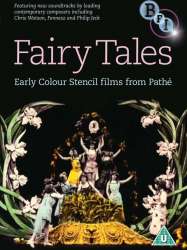
Legend of a Ghost (1908)
, 13minutesDirected by Segundo de Chomón
Genres Comedy, Fantasy, Horror
Actors Julienne Mathieu
Rating61%





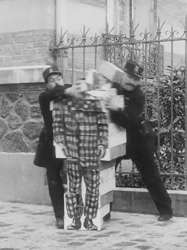
Diabolical Pickpocket (1908)
, 4minutesDirected by Segundo de Chomón
Origin France
Genres Comedy, Fantasy, Crime
Rating61%





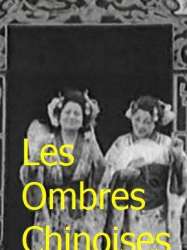
The Chinese Shadows (1908)
, 3minutesDirected by Segundo de Chomón
Origin France
Genres Comedy, Animation
Actors Julienne Mathieu
Rating53%





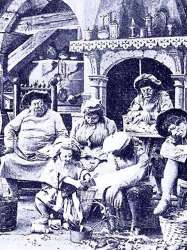
Scullion's Dream (1908)
, 6minutesDirected by Segundo de Chomón
Origin France
Genres Comedy, Fantasy
Rating60%





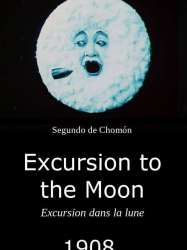
Excursion to the Moon (1908)
Directed by Segundo de Chomón
Origin France
Genres Science fiction, Comedy, Fantasy
Rating55%





 Connection
Connection
